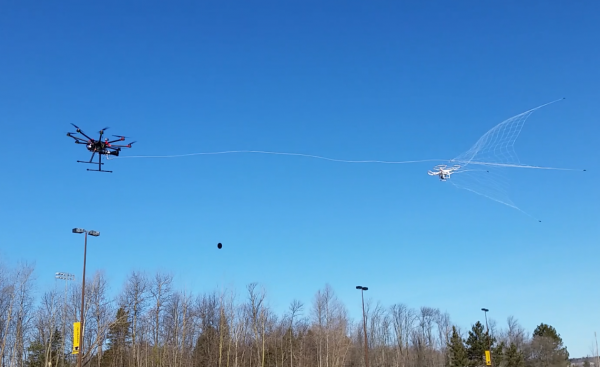For every action, a reaction: Small drones, in addition to all the good they can do, can be used for illicit surveillance and delivering explosives and smuggling, among other nefarious deeds, so Michigan researchers created a concept prototype of an anti-drone tool called “robotic falconry,” which nets the interloping technology and commandeers it to a safe place. What will the countermeasure be when spy drones can fit on the head of a pin? There’ll be a market, so something will emerge.
From Marcia Goodrich at Michigan Tech News:
In January 2015, a Washington, DC, hobbyist accidentally flew his DJI Phantom quadcopter drone over the White House fence and crashed it on the lawn.
Two years earlier, a prankster sent his drone toward German prime minister Angela Merkel during a campaign rally.
Small drones have also proven to be effective tools of mischief that doesn’t make the national news, from spying to smuggling to hacking. So when Mo Rastgaar was watching World Cup soccer and heard about snipers protecting the crowd, he doubted that they’d fully understood a drone’s potential.
“I thought, ‘If the threat is a drone, you really don’t want to shoot it down—it might contain explosives and blow up. What you want to do is catch it and get it out of there.’”
Safe Drone Catcher
So Rastgaar, an associate professor of mechanical engineering at Michigan Technological University, began work on a drone catcher, which could pursue and capture rogue drones that might threaten military installations, air traffic, sporting events—even the White House.•

